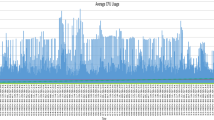Abstract
The recent boom in mobile device usage has provided more opportunities, competition and also increased complexities for content providers to monetize their information goods. Although mobile devices are becoming increasingly powerful, their hardware, software and connectivity are relatively more limited compared to desktop and enterprise systems. As a result, various content optimization services have emerged. This paper focuses on content optimization services that modify and reorganize content to reduce the size of content and enhance the performance of processing on the content. For most content providers, this optimization process needs to be fast, scalable and yet aligned with their monetization strategies and cost requirements. Based on our experience on content optimization services, this paper presents the economics related to these services. In particular, we present some practical considerations when these services are implemented on a cloud, which is typically perceived to be a cheaper and more scalable option compared to traditional dedicated servers.



Similar content being viewed by others
References
Agarwal, D., Chen, B.-C., & Elango, P. (2009). Explore/exploit schemes for web content optimization. In Proceedings of the 2009 Ninth IEEE International Conference on Data Mining, ICDM’09, (pp. 1–10). Washington, DC, USA: IEEE Computer Society.
Darrow, B. (2011). (Armed with cloud) Amazon’s Silk joins the browser wars. http://gigaom.com/cloud/amazon-silk/, September.
Deane, J., Rakes, T., & Agarwal, A. (2012). Designing content distribution networks for optimal cost and performance. Information Technology and Management, 13, 1–15. doi:10.1007/s10799-011-0107-4.
Gates, B. (1996). Content is kind. http://web.archive.org/web/20010126005200/http://www.microsoft.com/billgates/columns/1996essay/essay960103.asp.
Greenstein, S., & Markovich, S. (2012). Pricing experience goods in information good markets: the case of ebusiness service providers. International Journal of the Economics of Business, 19(1), 119–139.
Horincar, R., Amann, B., & Artières, T. (2010). Best-effort refresh strategies for content-based rss feed aggregation. In WISE, (pp. 262–270).
Kim, R. (2011). Skyfire puts mobile video on a bandwidth diet for carriers. http://gigaom.com/2011/10/11/skyfire-puts-mobile-video-on-a-bandwidth-diet-for-carriers/, October.
Lam, F., Lam, N., & Wong, R. K. (2002). Efficient synchronization for mobile xml data. In CIKM, (pp. 153–160).
Lewis, T. (1998). The new economics of information. IEEE Internet Computing, 2, 93–94.
Michiardi, P., Carra, D., Albanese, F., & Bestavros, A. (2012). Peer-assisted content distribution on a budget. Computer Networks, 56(7), 2038–2048.
Montazeri, A., Akbari, B., & Ghanbari, M. (2012). An incentive scheduling mechanism for peer-to-peer video streaming. Peer-to-Peer Networking and Applications, 5, 257–278. doi:10.1007/s12083-011-0121-7.
Nelis, J., Verslype, D., & Develder, C. (2011). Intelligent distributed multimedia collection: content aggregation and integration. Local Computer Networks, Annual IEEE Conference on, 0, 203–206.
Oppenheimer, C. (2012). Which is less expensive: Amazon or self-hosted? http://gigaom.com/2012/02/11/which-is-less-expensive-amazon-or-self-hosted/, February.
Shapiro, C., & Varian., H. R. (1999). Information rules: A strategic guide to the network economy. Strategy/Technology/Harvard Business School Press. Harvard Business School Press.
Sharma, R. S., & Morales-Arroyo, M. (2009). Deriving value in digital media networks. International Journal of Computer Science and Security, 3(2), 126–137.
Sood, P., Loutfy, R., & Parlikad, A. K. (2011). Value based pricing of information. In International Conference on Business and Information (BAI2011).
Varian, H. R. (2000). Buying, sharing and renting information goods. The Journal of Industrial Economics, 48, 473–488.
Wong, R. K., Lam, F., & Shui, W. M. (2007). Querying and maintaining a compact xml storage. In WWW, pp. (1073–1082).
Yu, B., Wang, L., & Manner, J. (2010). Energy-efficient web access on mobile devices. In Proceedings of the 2010 IEEE/ACM Int’l Conference on Green Computing and Communications & Int’l Conference on Cyber, Physical and Social Computing, GREENCOM-CPSCOM’10, (pp. 442–447). Washington, DC, USA: IEEE Computer Society.
Acknowledgment
The author would like to thank Bill Shui for collecting some of the data presented in this paper, and Nicole Lam for her comments and assistance in improving the paper.
Author information
Authors and Affiliations
Corresponding author
Rights and permissions
About this article
Cite this article
Wong, R.K. Feasibility and a case study on content optimization services on cloud. Inf Syst Front 15, 525–532 (2013). https://doi.org/10.1007/s10796-012-9379-4
Published:
Issue Date:
DOI: https://doi.org/10.1007/s10796-012-9379-4




